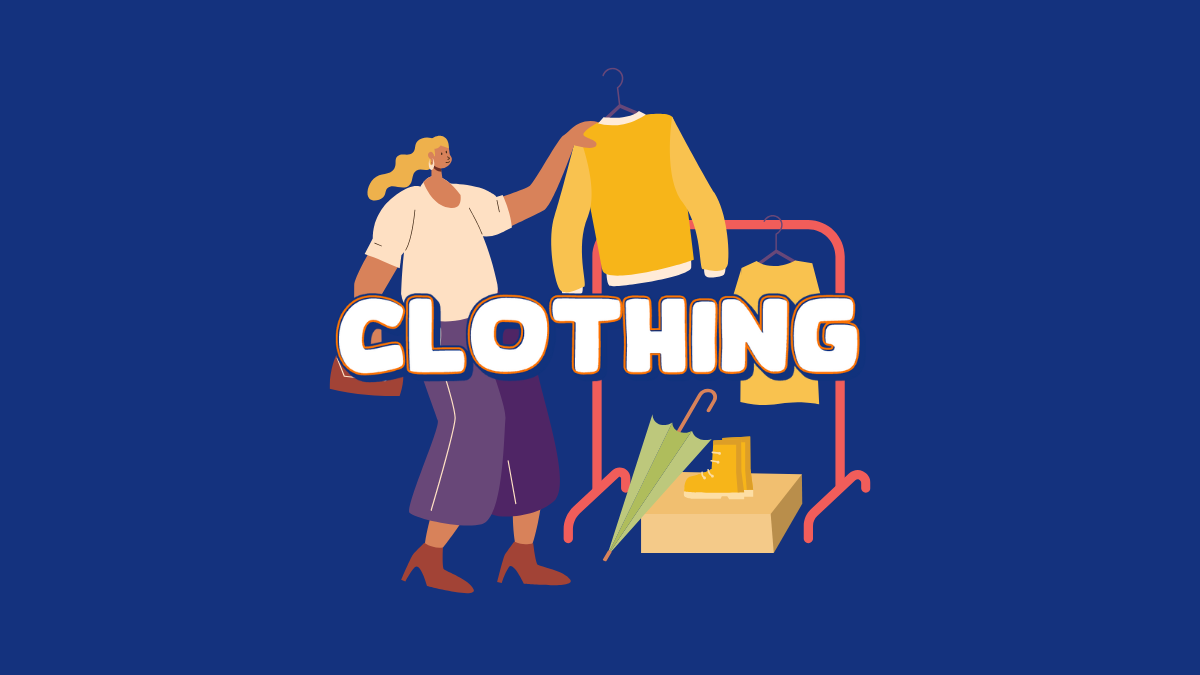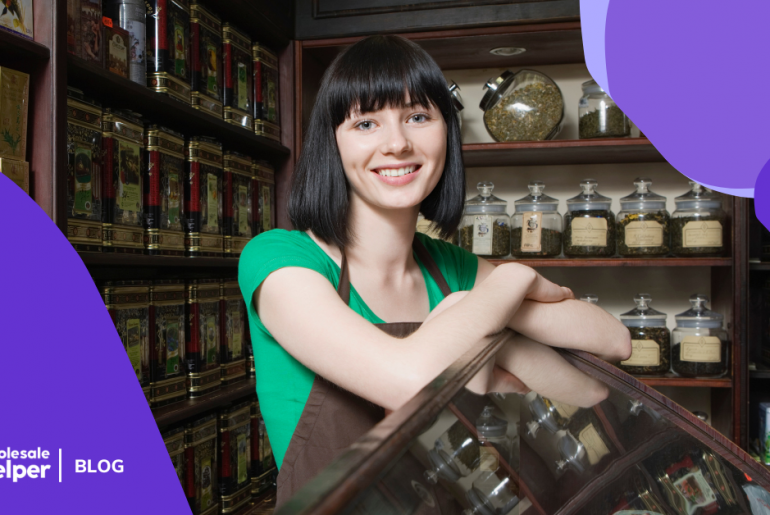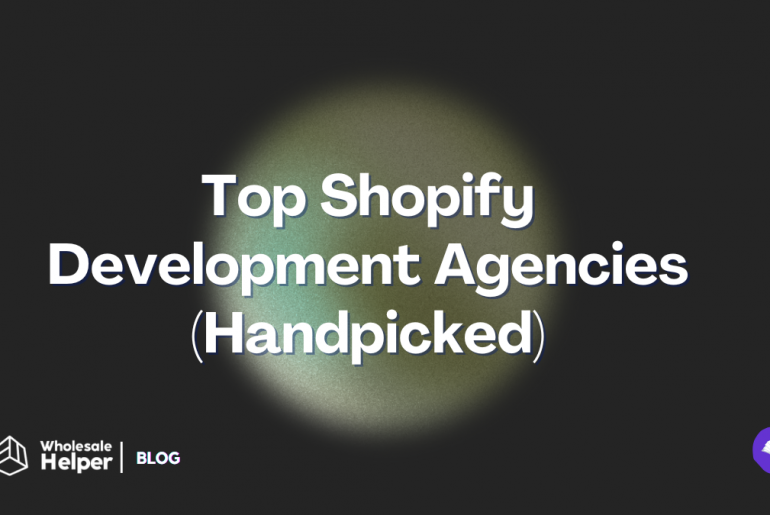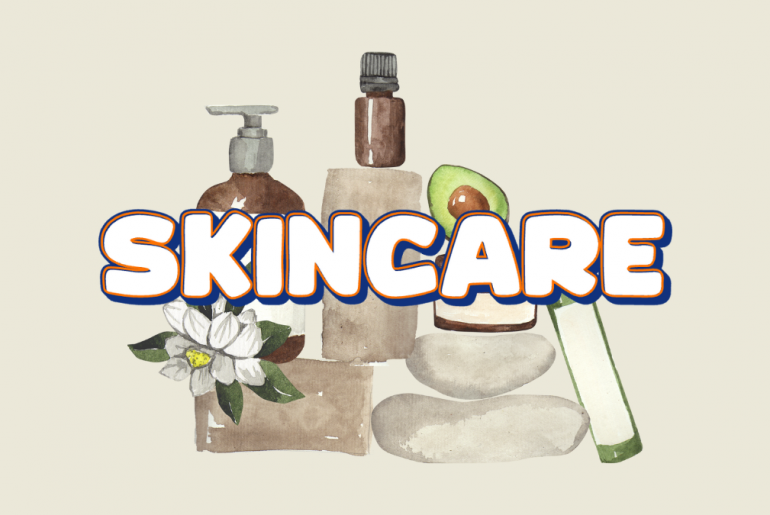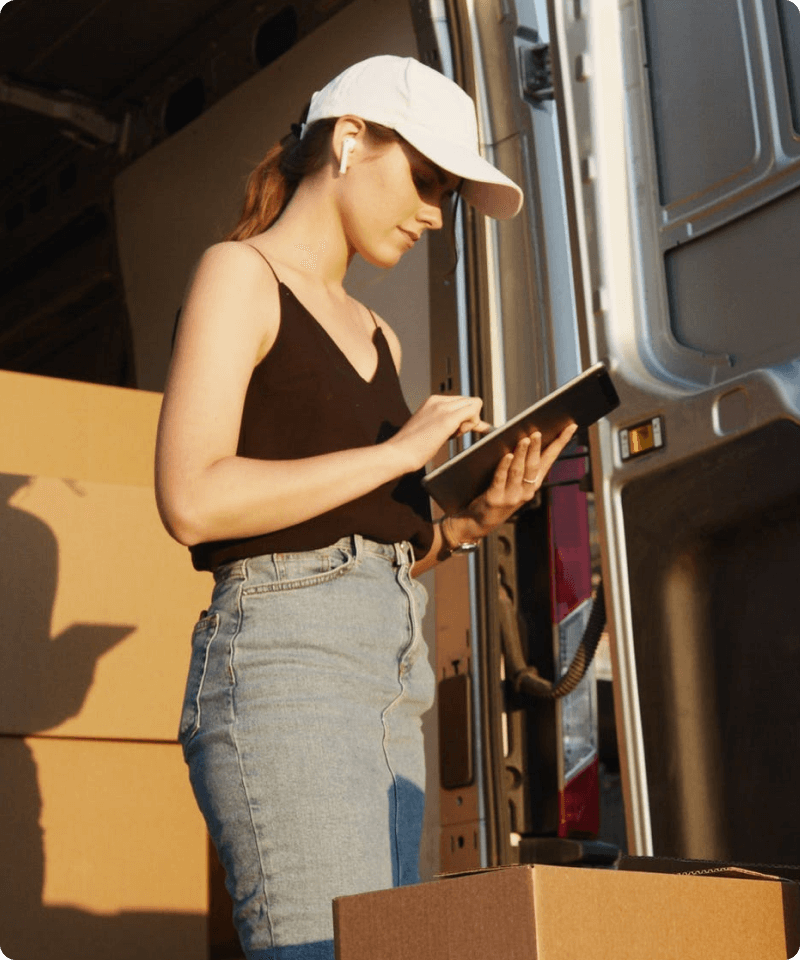To set effective wholesale prices for clothing brands on Shopify, start with an accurate landed cost. Next, you can use that figure to determine an accurate wholesale price that leaves you a healthy profit while still giving your retailer a strong margin off the MSRP. The last step is to implement a tiered pricing structure or volume discounts on your Shopify store.
The Core Challenge: Balancing the Three Key Numbers
Setting wholesale prices for clothing brands isn’t just about picking a number; it’s a careful balancing act between three figures:
1. your landed cost,
2. your wholesale price, and
3. your product’s MSRP (Manufacturer’s Suggested Retail Price).
Clothing retailers typically expect a 50-60% margin, which means your wholesale price must be low enough to leave them room to make a profit while still covering all your costs and target margin.
Let’s break down how to get it right.
Find Your Perfect Wholesale Price in Seconds
Calculate My Wholesale Price for FREE
Instantly calculate the right price to maximize profit and keep your customers happy.
The 5 Steps to Setting Wholesale Prices For Clothing Brands
1) Get Your Landed Cost Right (No Guesswork Allowed)
Your landed cost is the total, per-unit cost of getting a finished product to your warehouse door. It’s the most critical number in this entire process.
Calculate your landed cost by adding up every single expense:
- Raw Materials: Fabric, trims, buttons, labels.
- Manufacturing: The CMT (cut-make-trim) or factory price.
- Finishing: Polybags, hangtags, brand labels, and packaging.
- Inbound Freight & Duties: The cost to ship the goods from the factory to your warehouse, including any import duties or customs fees.
- Handling: The cost of warehousing, picking, and packing each unit.
- Overhead: A small allowance for payment processing fees, quality assurance, and sampling.
Mini Example (Unisex Tee, per unit):
| Cost Element | Amount |
| Fabric + Trims + CMT | $6.80 |
| Packaging & Tags | $0.30 |
| Freight & Duty (US) | $0.70 |
| Warehouse & Handling | $0.40 |
| Overheads Allowance | $0.80 |
| Total Landed Cost | $9.00 |
Pro Tip: Keep a simple spreadsheet where you can track costs by region. This is crucial if you’re shipping to the EU, for example, where you need to account for import VAT on arrival.
2) Anchor Your Pricing Strategy (Retail-First or Wholesale-First)
Once you have your landed cost, you can decide on your pricing strategy. (You can use a Wholesale Price Calculator for this.) Most brands use one of two approaches:
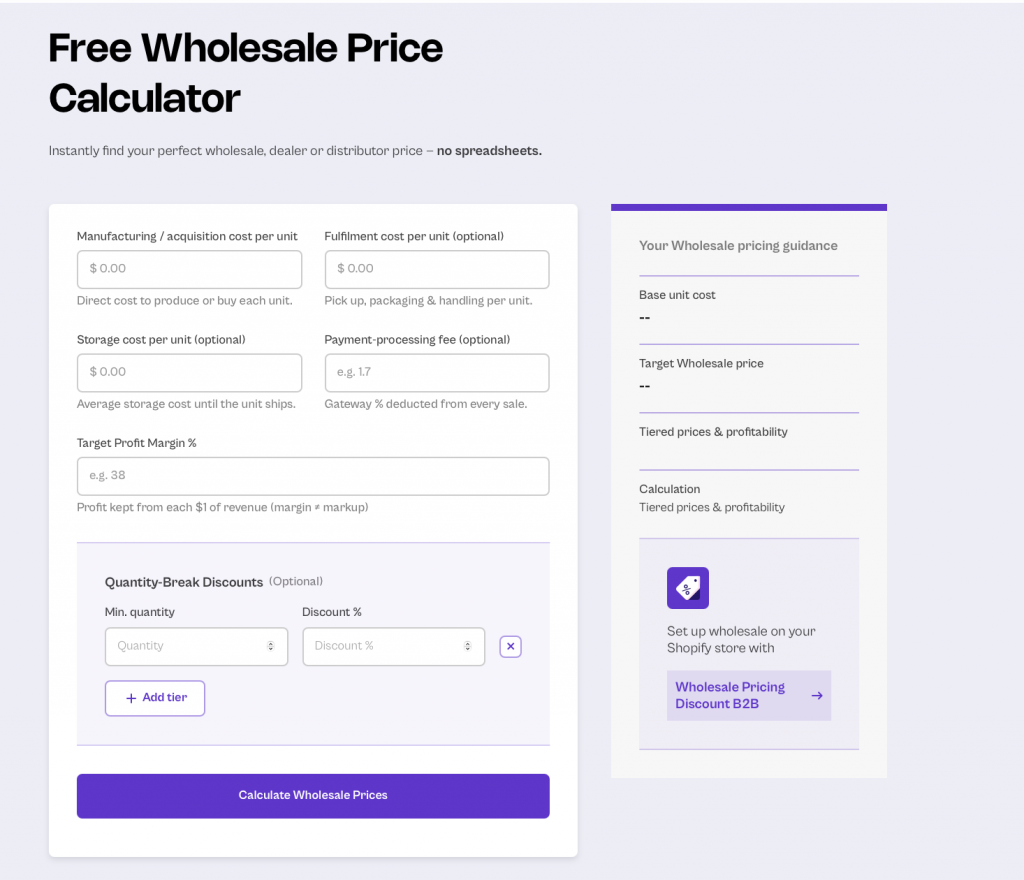
- Retail-First (Backsolving): This is the most common method for DTC-heavy brands. You start with the MSRP that the market will bear. If your market dictates a $50 MSRP and your retailer expects a 50% margin, then your wholesale price has to be around $25. With your $9.00 landed cost, this leaves you a healthy gross margin of 64% at wholesale.
- Wholesale-First (Rolling Up): You start by setting a target wholesale margin that you need to be profitable (often 55-65% for clothing). You then work backward to set a wholesale price and an MSRP that gives the retailer a competitive margin.
Formulas You’ll Use:
- Your Margin: (Wholesale Price – Landed Cost) ÷ Wholesale Price
- Retailer Margin: (MSRP – Wholesale Price) ÷ MSRP
3) Design Apparel-Friendly Price Breaks and MOQs
Keep your pricing structure simple and familiar to clothing buyers. Don’t overcomplicate things with too many tiers.
A Starter Template for a Tee or Hoodie:
- Minimum Order Quantity (MOQ): 24 units per style, or a “pack” of four 6-packs with a standard size curve.
- Price Breaks:
- 24+ units: Base wholesale price (e.g., $25)
- 72+ units: 5% off the base price
- 144+ units: 8-10% off the base price
- Sizing Options: Offer a standard size curve (e.g., 1-2-3-3-2-1 for XS–XXL) or allow open sizing with a smaller MOQ per size.
This structure works because apparel buyers think in terms of “packs” and “size curves,” and simple tiers are easier to understand and manage. If you offer custom embroidery or printing, keep those “decoration fees” separate from your base pricing to protect your core margin.
4) Implement Your Pricing on Shopify (Plus vs non-Plus)
Now it’s time to put your strategy into practice. The method you choose depends on your Shopify plan.
- If you’re on Shopify Plus (B2B): You can use Shopify’s built-in B2B price lists to assign tiered pricing and MOQs directly to your B2B customers. You can also use the B2B features to set company-specific payment terms.
- If you’re on a non-Plus Plan: This is where you use purpose-built apps to create a full wholesale system.
- Use Wholesale Pricing Discount B2B to set automated, customer-specific prices, quantity breaks, and MOQs.

- Use Wholesale Lock Manager B2B to hide your wholesale catalog and prices until a buyer is logged in and approved.

- Use WSH Order Form & ReOrder to give your buyers a fast, grid-style ordering experience for bulk purchases.
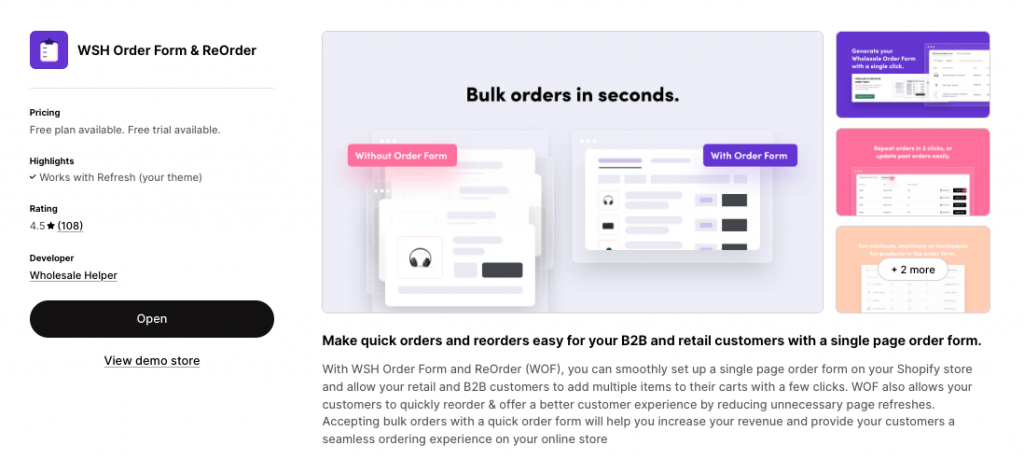
Pro Tip: Keep your collections clean (e.g., “Core Tees,” “Fleece”) to make it easier for buyers to navigate and for you to manage pricing.
5) Test with Real Accounts and Review Monthly
Before you launch your pricing to everyone, run a pilot program.
- Pilot Group: Invite a few key buyers (a boutique, an online retailer, etc.) to place an order.
- Check and Verify: Watch them check out to ensure the prices, discounts, and tax calculations work correctly after they log in.
- Measure: Track your average order value, how often customers meet your MOQs, and your reorder rate.
- Iterate: If buyers are consistently pushing back on a specific price or MOQ, use that feedback to make small adjustments to your pricing tiers before rolling it out to your entire wholesale network.
Real Example Walk-Through
Let’s say you’re launching a Unisex Heavy Tee:
- Your Landed Cost (US): $9.00
- Your Target Margin: You want to leave a 50% margin for the retailer off the MSRP.
- MSRP: You set your MSRP at $50.
- Wholesale Price: To hit the 50% retailer margin, your wholesale price is $25. Your profit margin is 64%—perfect.
- Pricing Tiers: (Calculate Pricing Tiers using this Wholesale Pricing Calculator)
- 24+ units → $25
- 72+ units → $23.75 (5% off)
- 144+ units → $23.00 (8% off)
- Shopify Setup: You assign a “Wholesale” customer tag and set these tiered prices in your wholesale app. You also use a lock manager to hide the collection until the buyer logs in.
Ready to impress your B2B customers? Start wholesaling like a pro! 🙂
Try our Wholesale Pricing Discount app for free !
Trusted by over 15,000 Shopify merchants
Frequently Asked Questions
What’s the difference between markup and margin in clothing wholesale?
Markup is calculated from your cost up: (Price – Cost) / Cost. Margin is calculated from your price down: (Price – Cost) / Price. Use margin to check both your profit and the retailer’s profit at MSRP, as it’s the standard in the apparel industry.
How much of a wholesale discount off MSRP is normal?
Clothing or Apparel retailers often expect a 50-60% margin off the MSRP. This means your wholesale price is typically 40-50% of the MSRP.
How many pricing tiers should I use for quantity breaks?
Two or three clear tiers (e.g., at 24, 72, and 144 units) are enough for most lines. Adding too many tiers can confuse buyers and make your pricing difficult to manage.
How do I handle VAT/GST for my wholesale prices?
A good practice is to set your wholesale price ex-VAT/GST. Then, at checkout, the tax will be applied based on the buyer’s region and tax-exempt status. In the UK and EU, retailers often discuss MSRPs that are VAT-inclusive, so you must keep that distinction clear on your line sheets.
How do I handle different landed costs for international orders?
This is a key part of geo-optimization. If your landed cost for a shipment to the UK is higher due to import duties, you can create a separate price list for customers tagged b2b-uk that reflects this higher cost.
What if I sell items with different manufacturing costs?
You should calculate the landed cost for each product individually. A good app will allow you to set specific tiered pricing rules per SKU, so you can easily manage different prices for a t-shirt versus a hoodie.
Can I use this strategy with smaller product lines?
Yes. Even with a small catalog, this strategy is important for professionalism. You can simplify your tiers and MOQs to a single break (e.g., “12+ units”) to encourage larger orders without overcomplicating things.
What should I do if a buyer wants a deeper discount than what I offer?
This is a common negotiation point. If your margins are too tight, you can offer a deeper discount in exchange for a larger quantity, a longer-term commitment, or a larger pre-order. You can use your app to set up specific pricing for that individual customer.
How do I handle custom embroidery or screen printing costs?
It’s best to keep any decoration fees separate from your wholesale price. You can have a separate “customization fee” that you add to the order, which protects your base apparel margin from fluctuating with a specific design or color count.
What’s the difference between DAP and DDP shipping for international wholesale?
DAP (Delivered at Place)means you ship the goods, but the customer is responsible for paying import duties and taxes on arrival. DDP (Delivered Duty Paid) means you handle all customs fees and taxes, which raises your landed cost but gives the customer a final, all-inclusive price. You should choose a strategy and clearly communicate it to your buyers.

